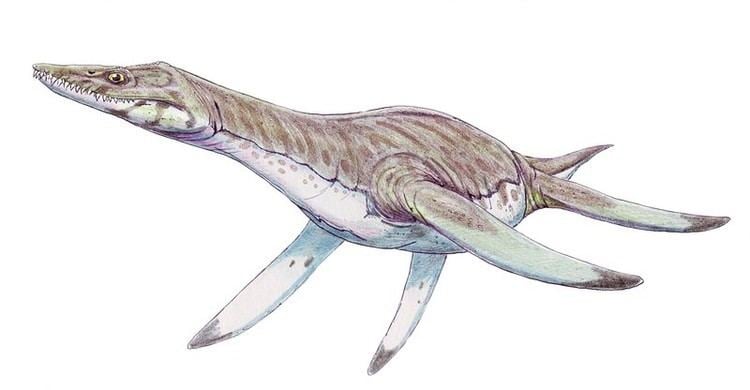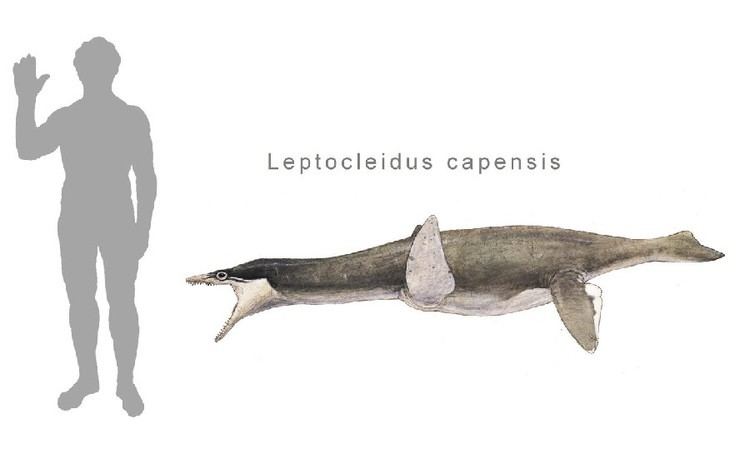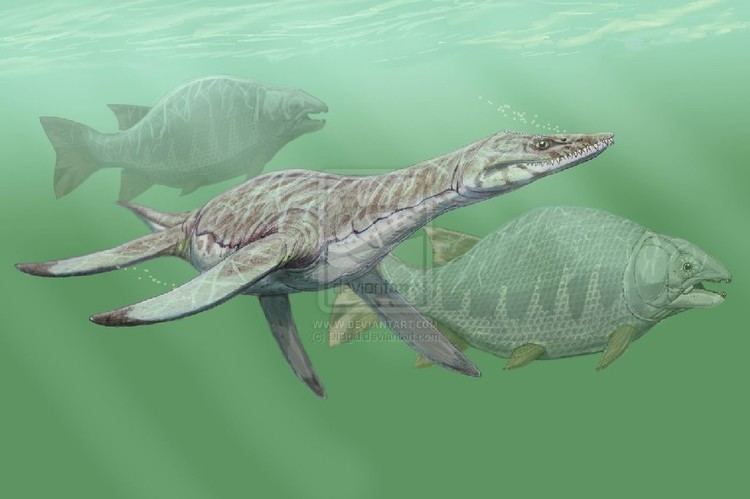Phylum Chordata Order Plesiosauria | Class Sauropsida Suborder †Plesiosauroidea Scientific name Leptocleidus Rank Genus | |
 | ||
Similar Styxosaurus, Trinacromerum, Mauisaurus, Dolichorhynchops, Dakosaurus | ||
New maxed leptocleidus jurassic world lagoon series ep 7 hd
Leptocleidus is an extinct genus of pliosaurid plesiosaur, belonging to the family Leptocleididae. It is the only known pliosaur to be found in sediments on the Isle of Wight.
Contents
- New maxed leptocleidus jurassic world lagoon series ep 7 hd
- Leptocleidus level 40 jurassic world the game
- Etymology
- Description
- Distribution and habitat
- Species
- References

Leptocleidus level 40 jurassic world the game
Etymology

In short, the term Leptocleidus means "slender clavicle". It comes from a merge of the Greek words λεπτοσ, meaning "slender" and κλειδ (also spelled κλεισ) meaning clavicle.
Description

With large clavicles and interclavicle and small scapulae, Leptocleidus resembled the Early Jurassic Rhomaleosaurus and members of the Cretaceous family, Polycotylidae. The animal had 21 teeth on either side of its maxilla and approximately 35 teeth on each side of the mandible. The Leptocleidus' triangle-shaped skull had a crest running from a ridge on the end of the nose to the nasal region. Differing from other pliosaurids, Leptocleidus had single-headed cervical ribs and a deep depression in the centra of the neck vertebrae. Leptocleidus was on an average of 3 meters (10 feet) long. Leptocleidus superstes however, was found to be almost 50% smaller (1.5m, 5 ft) making it the smallest known species.
Distribution and habitat

Leptocleidus, unlike many pleisiosaurs, lived in shallow lagoons and likely visited brackish and fresh water systems (such as the mouths of large rivers). This led A. R. I. Cruikshank to infer that this movement to fresh water was an attempt to flee larger plesiosaurs and pliosaurs. Most species are known from The British Isles but L. capensis was discovered in Cape Province, South Africa.
Species
Leptocleidus is known from the following sediments:

Cladogram based on Ketchum and Benson (2011):
